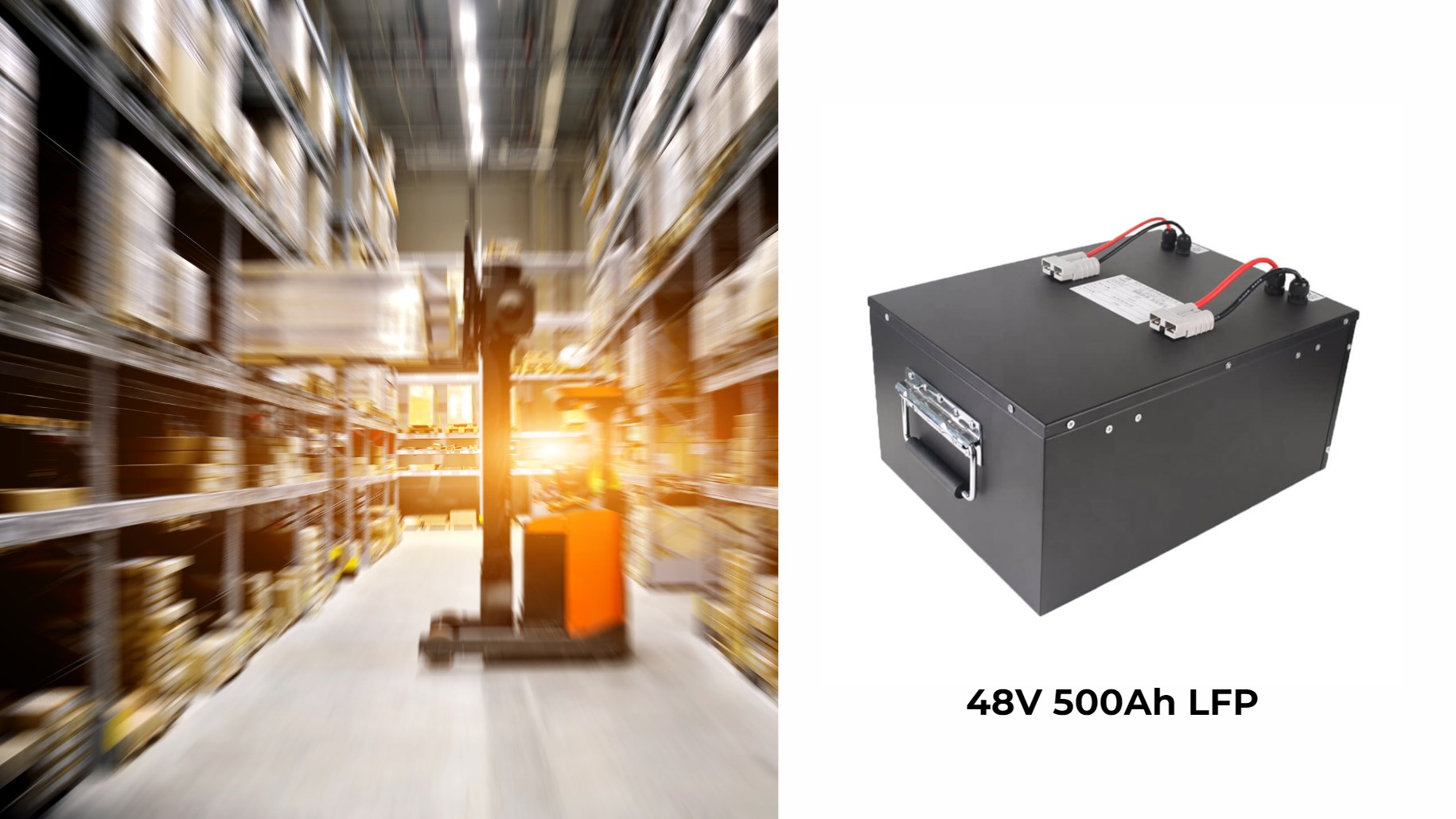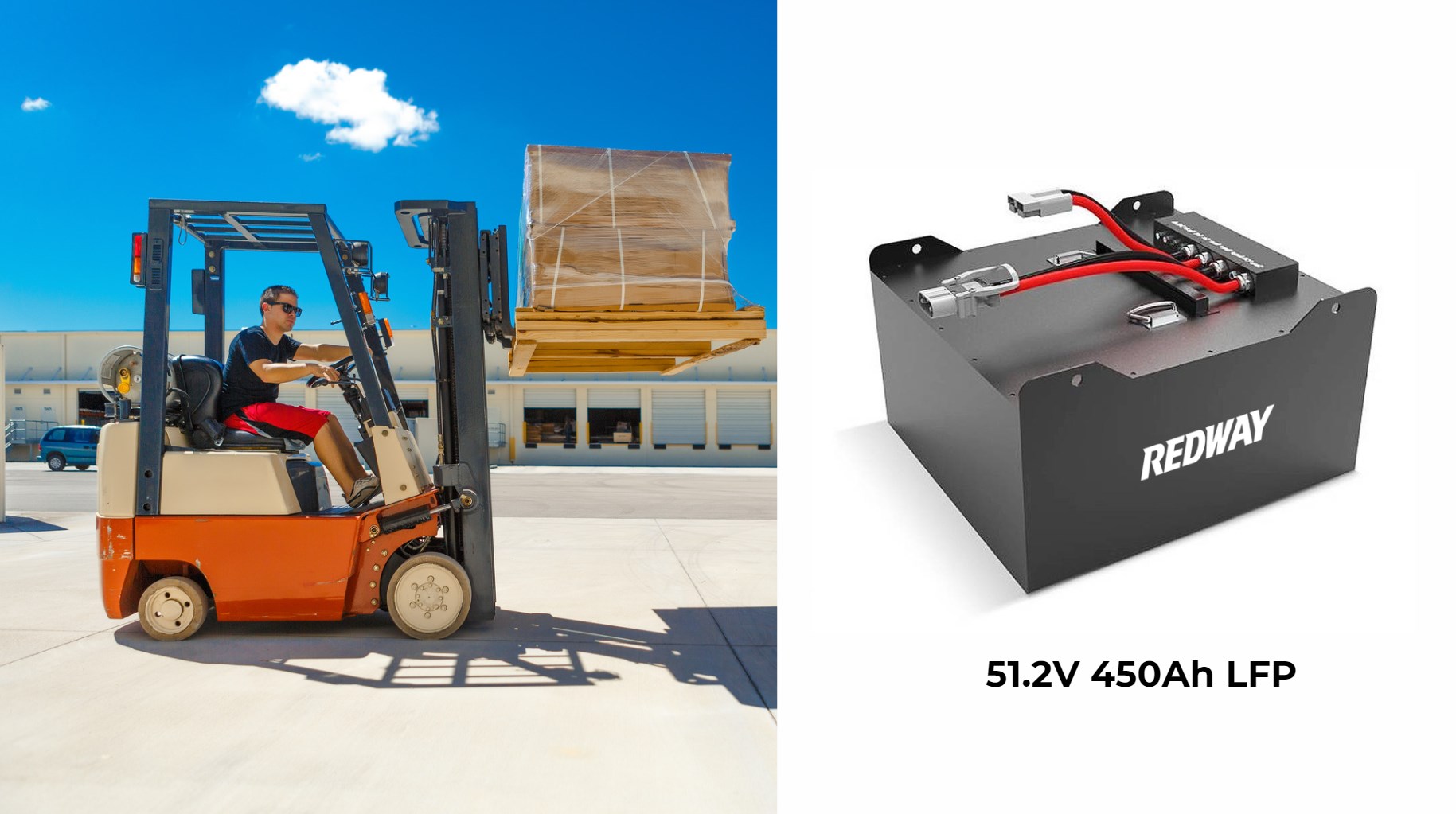LiFePO4 forklift batteries are a type of lithium-ion battery known for their safety, longevity, and efficiency. They provide consistent power output with minimal maintenance needs while offering advantages such as faster charging times and reduced weight compared to traditional lead-acid options.
In the realm of material handling, LiFePO4 forklift batteries have emerged as a game-changer, offering unparalleled benefits in terms of performance, safety, and efficiency. Unlike traditional lead-acid batteries, LiFePO4 batteries boast a myriad of advantages that make them a preferred choice for modern forklift operations. These batteries are known for their exceptional lifespan, consistent power output, and, notably, their fast charging capabilities.
What is a LiFePO4 Forklift Battery?
A LiFePO4 battery, or Lithium Iron Phosphate battery, represents a type of lithium-ion battery that utilizes iron phosphate as the cathode material. This composition offers distinct advantages, such as improved thermal stability, enhanced safety, and longer cycle life. In the context of forklift operations, these attributes translate to reliable and sustained performance, reducing downtime and maintenance costs.
Charging Time for LiFePO4 Forklift Batteries
Typical Charging Duration
The typical charging time for a LiFePO4 forklift battery ranges from 1 to 2 hours. This rapid charging capability significantly enhances operational efficiency, allowing forklifts to return to service quickly. However, it is crucial to understand that the actual charging time can vary based on several factors.
Factors Influencing Charging Time
Battery Capacity
The capacity of the battery, measured in ampere-hours (Ah), plays a pivotal role in determining the charging duration. Larger capacity batteries will naturally require more time to charge compared to smaller ones. For instance, a 100Ah battery will take longer to charge than a 50Ah battery, even with the same charger.
Charger Efficiency
The efficiency and power rating of the charger also impact the charging time. High-efficiency chargers can deliver more current to the battery, reducing the overall charging duration. For example, a 50A charger will charge a battery faster than a 25A charger, assuming the battery can accept the higher current.
Charging Method
Different charging methods can affect the charging time of LiFePO4 batteries. Common methods include:
- Constant Current (CC): In this method, the charger supplies a constant current until the battery reaches its maximum voltage. This method is straightforward and efficient for rapid charging.
- Constant Voltage (CV): Here, the charger provides a constant voltage, and the current gradually decreases as the battery charges. This method is typically used towards the end of the charging cycle to prevent overcharging.
- CC-CV Method: A combination of the above two methods, where the charger starts with a constant current and switches to constant voltage as the battery nears full charge. This is the most efficient and commonly used method for LiFePO4 batteries.
Environmental Factors
Temperature and other environmental conditions can also influence the charging time. LiFePO4 batteries perform optimally at room temperature. Extreme cold or heat can slow down the charging process or, in some cases, damage the battery. Therefore, it is essential to charge these batteries in a controlled environment to ensure safety and efficiency.
Benefits of Fast Charging LiFePO4 Forklift Batteries

Increased Productivity
The ability to charge a LiFePO4 battery in just 1 to 2 hours dramatically increases the uptime of forklifts. This rapid turnaround time means that forklifts can be back in operation sooner, minimizing downtime and enhancing overall productivity. For businesses relying on constant forklift use, this can translate to significant cost savings and improved operational efficiency.
Reduced Need for Spare Batteries
With fast charging capabilities, the necessity for maintaining a large inventory of spare batteries diminishes. This not only reduces the initial investment in multiple battery sets but also cuts down on storage and maintenance costs. A single battery can be used multiple times within a work shift, thanks to its quick recharge time.
Extended Battery Lifespan
LiFePO4 batteries are known for their long cycle life, often lasting up to 4,000 cycles or more. Rapid charging, when done correctly, does not significantly degrade the battery’s lifespan. In fact, the robust design and chemical stability of LiFePO4 batteries ensure that they maintain their performance over prolonged periods, even with frequent charging.
Best Practices for Charging LiFePO4 Forklift Batteries
Use the Right Charger
Using a charger specifically designed for LiFePO4 batteries is crucial. These chargers are calibrated to handle the unique charging profile of LiFePO4 cells, ensuring safe and efficient charging. Overcharging or using an incompatible charger can lead to reduced battery life or safety hazards.
Monitor Charging Conditions
It is advisable to monitor the charging conditions closely. Ensure that the charging area is well-ventilated and free from excessive heat or moisture. Regularly check the charger and battery connections for any signs of wear or damage.
Implement a Charging Schedule
Establishing a consistent charging schedule can help in maintaining the battery’s health. Avoid deep discharges and charge the battery before it is completely drained. This practice not only ensures that the battery is always ready for use but also prolongs its overall lifespan.
Conclusion
LiFePO4 forklift batteries represent a significant advancement in the field of material handling, offering a host of benefits that enhance operational efficiency and safety. The typical charging time of 1 to 2 hours is a testament to their fast charging capabilities, making them an ideal choice for demanding forklift operations. By understanding the factors that influence charging time and implementing best practices, businesses can maximize the advantages of LiFePO4 technology, ensuring sustained productivity and cost savings.




